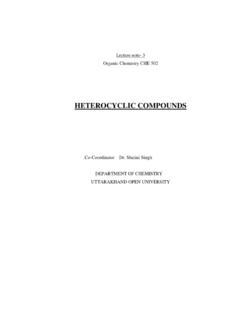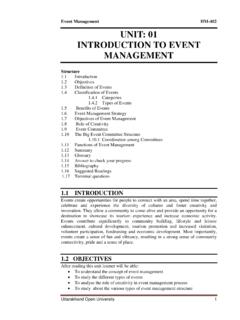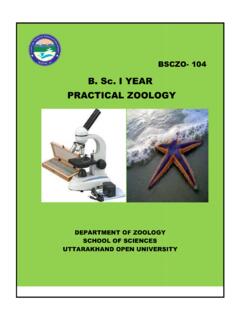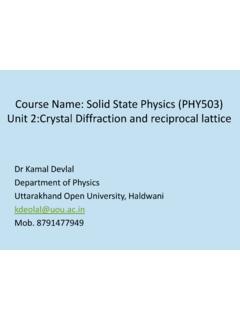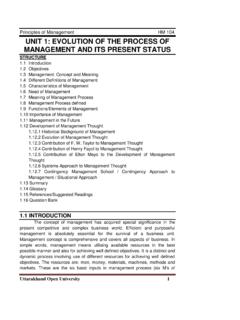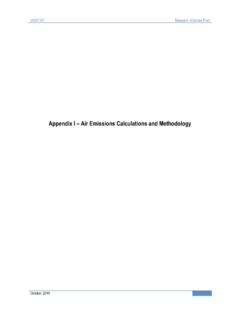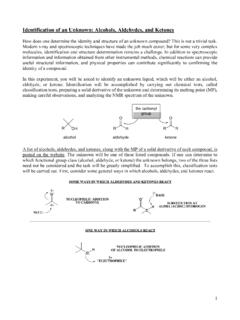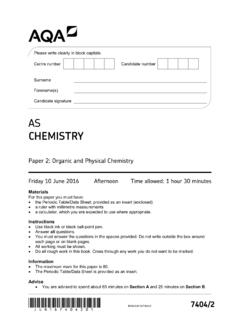Transcription of Lecture Note -1 Organic Chemistry CHE 502 …
1 Lecture Note - 1 organic Chemistry CHE 502 STEREOCHEMISTRY- I Dr. SHALINI SINGH DEPARTMENT OF Chemistry UTTARAKHAND OPEN UNIVERSITY UNIT 1 BASIC CONCEPTS OF STEREOCHEMISTRY Unit structure Introduction Objectives Stereochemistry- Definition Terminology used in stereochemistry Representation of three dimensional molecules Element of symmetry Nomenclature Summary Glossary Check your progress Bibiliography Suggested readings Terminal Questions INTRODUCTION: Stereochemistry deals with three dimensional representation of molecule in space.
2 This has sweeping implications in biological systems. For example, most drugs are often composed of a single stereoisomer of a compound. Among stereoisomers one may have positive effects on the body and another stereoisomer may not or could even be toxic. An example of this is the drug thalidomide which was used during the 1950s to suppress the morning sickness. The drug unfortunately, was prescribed as a mixture of stereoisomers, and while one stereoisomer actively worked on controlling morning sickness, the other stereoisomer caused serious birth defects.
3 The study of stereochemistry focuses on stereoisomers and spans the entire spectrum of Organic , inorganic, biological, physical and especially supramolecular Chemistry . Stereochemistry includes method for determining and describing these relationships; the effect on the physical or biological properties. So to have the sound knowledge of stereochemistry we should have good command over their basic concepts. OBJECTIVES: Classification of stereoisomers Recognize a stereogenic (chiral) center in a molecular structure Various representation of three dimentional molecules To be able to predict, identify and distinguish between enantiomers and diastereomers.
4 Various nomenclature of stereoisomers to define them properly STEREOCHEMISTRY: DEFINITION The branch of Chemistry which deals with three dimensional structure of molecule and their effect on physical and chemical properties is known as stereochemistry. To represent molecule as three dimensional object we need at least one carbon sp3- hybridized. Example: HClBrIClHIBr2D drawing Not appropriate for steriochemistry3D drawing appropriate for steriochemistry TERMINOLOGY USED IN STEREOCHEMISTRY A. ISOMERS AND THEIR CLASSIFICATION You are already familiar with the concept of isomers: different compounds which have the same molecular formula.
5 Here we will learn to make distinction between various kinds of isomers, especially the stereoisomers. B. OPTICAL ACTIVITY We know that ordinary lights are composed of rays of different wavelengths vibrating in all directions perpendicular to the path of its propagation. These vibrations can be made to occur in a single plane by passing ordinary light through the polarizing Nicol prism. Such light whose vibrations occur in only one plane is called plane polarized light Compounds which rotate the plane of polarized light are called optically active compounds and this property is known as optical activity.
6 Rotation of plane of polarized light can be of two types. Dextrorotatory : If the compound rotates the plane of polarization to the right(clockwise) it is said to be dextrorotatory (Latin: dexter-right) and is denoted by (+), or d . Laevorotatory : If the compound rotates the plane of polarization to the left(anticlockwise) it is said to be laevorotatory (Latin: laevus-left) and is denoted by (-) or l The change in the angle of plane of polarization is known as optical rotation. The optical rotation is detected and measured by an instrument called polarimeter.
7 The measurement of optical activity is reported in terms of specific rotation [ ], which is given as, [ ] t = /lc [ ]= specific rotation t = temperature of measurement =wavelength of the light used = observed angle of rotation l= length of sample tube in decimeter c=concentration of the sample in g/mL of solution C. CHIRALITY The term Chiral- The word chiral (Greek word Chier,meaning hand) is used for those objects which have right-handed and left-handed forms, , molecules which have handedness and the general property of handedness is termed chirality.
8 An object which is not superimposable upon its mirror image is chiral. The term Achiral- Object and molecules which are superimposable on their mirror images is achiral. Achiral molecule has internal plane of symmetry, a hypothetical plane which bisects an object or molecule into mirror-reflactive halves. An object or molecule with an internal plane of symmetry is achiral. The term Asymmetric center and chiral center- Three terms are used to designate, a carbon atom bonded tetrahedrally to four different substituents in a chiral molecule: Asymmetric atom, chiral center or stereocenter.
9 Chiral centre Let us understand chiral and achiral center taking few more examples. BCDA* The term stereogenic center or stereocenter- A stereogenic center is defined as an atom on which an interchange of any two atoms or groups result in a new stereoisomer, When the new stereoisomers is an enantiomer ,the stereocenter is called chiral center. All stereocenters are not tetrahedral.
10 Example 1 CH3 ClBrHCH3 HBrHCH3CH2CH2CH3CH2CH3 HOHCH3 Chiral (asymmetric)has four different atoms bonded to carbonAchiraldoes not have four different atoms bonded to the carbonChiralhas four different groups bond to the carbonAchiralonly has three atoms bonded to the carbon**COOHOHCH3 HInterchange between two groups(eg. H and OH)COOHHCH3 HOSteriocentre INew Sterioisomer IIFirst and second are enantiomers (non superimposible mirror images), Hence the steriocentre is a chiral centreCHOOHOHCH2 OHHHCHOOHOHHCH2 OHHHHO Chiralwith two chiral centre Chiralwith three chiral centre**Chiral centres are shown by astrik (*) Example-2 III and IV are not enantiomers.
